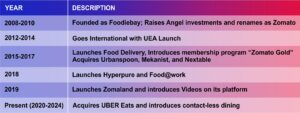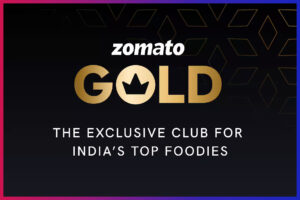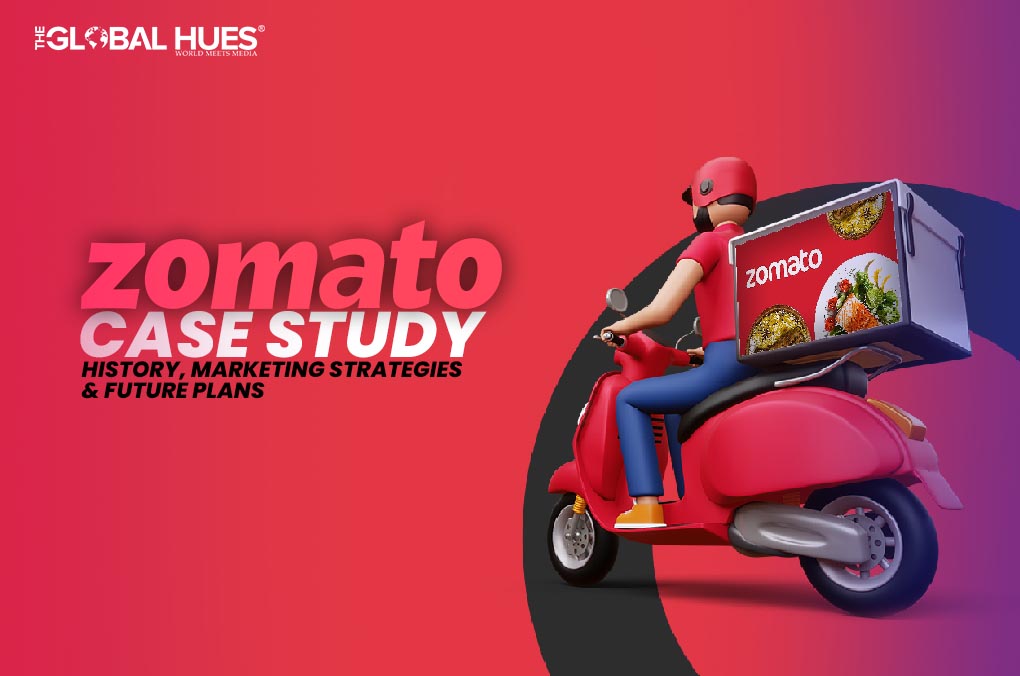Discover
-
How did Zomato evolve from its inception to become a dominant player in the online meal delivery market?
-
What sets Zomato apart in the realm of online food delivery?
-
What are Zomato’s future plans and strategic initiatives?
Imagine you and your team being hungry during a meeting or when you don’t have the strength to cook. What will you do? You can easily order food with a few clicks from your phone. In FY 2023, Zomato has 58 million annual customers on its platform. Zomato began as a small restaurant search and discovery website in 2008. It has now become a giant player in the online meal delivery market. This case study explores Zomato’s journey from development, its investors, creative business strategy, marketing tactics, difficulties faced and future goals.
Evolution of Zomato
Deepinder Goyal and Pankaj Chaddah incepted Zomato in the year 2008. They both are IIT graduates. They were working with Bain&Co. in New Delhi before they launched Zomato. It eased the process of food delivery and eating out. The current market value of Zomato is 1172.92 billion (as of 10 January 2024). According to the co-founder, Pankaj Chaddah, the vision of Zomato “is to be the global platform for people looking for food locally.” Zomato provides concrete information, menus, and user reviews of the restaurants. Below is a timeline that showcases the growth of Zomato.
Timeline

| Year | Description |
| 2008-2010 | Founded as Foodiebay; Raises Angel investments and renames as Zomato |
| 2012-2014 | Goes International with UEA Launch |
| 2015-2017 | Launches Food Delivery, Introduces membership program “Zomato Gold”
Acquires Urbanspoon, Mekanist, and Nextable |
| 2018 | Launches Hyperpure and Food@work |
| 2019 | Launches Zomaland and introduces Videos on its platform |
| Present (2020-2024) | Acquires UBER Eats and introduces contact-less dining |
How many investors does Zomato have?
Several well-known investors have invested in Zomato. One of the notable examples of this is Info Edge India, which gave Zomato $16.7 million in its early years. Sequoia Capital, Alibaba, and Ant Financial contributed to subsequent investment rounds, demonstrating investor faith in Zomato’s projected development trajectory. Morgan Stanley and Abu Dhabi Investment Authority are the most recent investors.
What are the unique qualities of Zomato’s business model that contribute to its success?

Zomato’s diverse business model includes multiple revenue streams essential to its success. The company began as a platform for listing and advertising restaurants. Later, it expanded into food delivery, live events like Zomaland, subscription services like Zomato Gold, and joint ventures with cloud kitchens and restaurant owners.
The launch of Zomato Gold and Piggybank strengthened the company’s value proposition, and partnering up with Visa, Uber Taxi, and PayPal strengthened the company’s market position. With its foray into the cloud kitchen, Zomato expanded the variety of its income sources and showed flexibility in responding to changing customer demands.
Zomato Gold is a premium subscription service offered by Zomato. It provides members with exclusive dining benefits. The subscribers can enjoy complimentary dishes or drinks at the partner restaurants and receive special privileges and discounts at a wide range of top-rated eateries.
Moreover, Zomato entered the live event market in 2019 and introduced Zomaland. Users pay an entry fee to attend Zomaland; they can indulge in different types of food and witness live musical performances and other acts.
Zomato has an enormous database of restaurants across 10,000 cities in 24 different countries. The company’s target audience is users who try to find local restaurants of various cuisines and restaurants that want their name to reach several people. Zomato’s business has two parts: one is the delivery business, and the other is advertising. Advertising is Zomato’s major source of revenue: the restaurants can promote their banner on the site to get better visibility and appeal to the larger section of the audience via Zomato.
What are the different marketing strategies used by Zomato?

Zomato’s expertise in digital marketing has played a crucial role in fostering brand loyalty and increasing user involvement. It uses social media sites like Facebook, Instagram, and Twitter to select interesting information related to popular subjects that appeal to a wide range of users. Moreover, the company utilises Google Adwords for its search and campaigns. It targets terms such as ‘food,’ ‘online ordering,’ ‘restaurant names,’ and many others. It also runs Google Display advertisements to target people on applications and websites from third parties.
Memes have become synonymous with Zomato as it has mastered the technique of “meme marketing.” Zomato can generate a lot of organic traffic thanks to its content marketing technique, which helps increase its overall revenue. Furthermore, it capitalises on the popular global events like the Olympics or cultural phenomena such as “Pokemon Go.”
Challenges
Zomato has grown exponentially; however, it also faces its share of several obstacles in a market that has become more and more competitive. The company continuously innovates and sets itself apart from its competitors, like FoodPanda and Swiggy. Moreover, it faces enormous obstacles in navigating the intricacies of last-mile delivery, controlling operational expenses, and maintaining service quality.
If we talk about the challenges in the past, Zomato faced backlash from restaurant owners for its Gold Program. The program gave immense amounts of discounts to the customers and kept the restaurant owners in the backseat. The owners incurred massive losses and didn’t get any share of the profits the aggregators generated through the program. It kick-started a #LogOut Campaign against Zomato.
What are the Future plans for Zomato?
Zomato plans to diversify into the catering business by leveraging its established network of restaurant partners as a part of the broader strategy to service large orders. Moreover, it looks to add more offerings to its loyalty program, Zomato Gold. It is done despite the concerns about profitability. Furthermore, Zomato introduced the multi-cart feature, which allows users to order from multiple restaurants simultaneously.
Bottom Line
Zomato’s path from a modest restaurant search website to a global meal delivery giant reflects the incredible evolution of the online food sector.
Founded in 2008 by Deepinder Goyal and Pankaj Chaddah, Zomato has become a dominant force in the online meal delivery industry, with 58 million users served annually as of FY 2023. The company’s success can be ascribed to its wide range of revenue sources, effective marketing techniques, and extensive worldwide restaurant database. Zomato is still committed to diversifying its business and strengthening its user base despite several obstacles and criticism regarding the discount initiatives.




